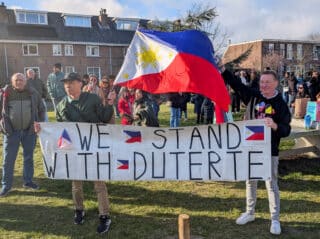Fifty years ago, the Philippines had more than enough rice. Our population was 32 million, or around a third of what it is now. For years, the Philippines had imported rice, but, in 1967, we had a surplus of 200,000 metric tons. New high-yielding varieties (HYV) assured a second harvest. The HYV yield per hectare was triple. Some rice farmers’ incomes quadrupled.
In 1968, we exported a modest 65,000 mt because we could, and gifted Indonesia with a planeload of HYV seeds. Thus was fulfilled Marcos’ 1965 campaign promise of full rice bowls, propelling the Nacionalista Party to a 1969 mid-term victory.
Rice sufficiency meant more than the optics of government warehouses filled to the rafters, as President Duterte demands. It was a complex national endeavor requiring thousands of tradition-bound farmers to switch to HYVs, with hundreds of agricultural technicians to train them. Credit, irrigation, drier and storage facilities were provided, along with support from media and schools. The government guaranteed a purchase price for palay as an incentive for the farmers to keep planting more. This would stop the vicious cycles of rice shortages and importation.
Marcos’ first executive secretary, the late Rafael M. Salas, orchestrated the Rice Sufficiency Program’s success. He worked beyond regular office hours, networked tirelessly and visited the hinterlands of priority rice-producing provinces by banca or carabao. He summarily fired or floated erring public officials, regardless of political color or powerful kin, declaring: “The Philippine bureaucracy needs periodic forceful rebukes to prod it on.”
Still, Salas, a Zen Buddhism practitioner, never used threats or profanity. He would have been 90 this August.
Salas resigned from the Marcos Cabinet in 1969 to head the United Nations Fund for Population Activities. He attributed the inexorable decline in rice production throughout martial law to the authoritarian government: “The absence of legislative and electoral checks allowed the allocation of resources to unproductive sectors. The sustained investment needed in agriculture was lacking. Increased elitism ruptured the close ties between farmer and government once nurtured by the Rice Sufficiency Program.”
Salas also laid the groundwork for the Philippine Population Commission in February 1969, prodding President Marcos to issue an executive order delineating a national policy on population; as he pointed out, unless our population growth kept apace with our overall development, we must keep running just to stay in place. He also advocated for meaningful land reform and more equitable income distribution. Succeeding presidencies showed little political will in these matters.
Salas credited the Philippine Rice Sufficiency Program’s success to what he called “participatory management,” the basis for a fully functional democracy. After the Marcos regime’s demise, many of the “Salas Boys,” the prototypical technocrats who had worked with him during Marcos’ first term, went on to Cabinet positions under other presidents.
The passing generation, such as the late Washington SyCip, still call Rafael M. Salas “the best president the Philippines never had.” Because of him, there once was that brief shining moment when the Philippines had more than enough rice.
Menchu Aquino Sarmiento is writing a biography of Rafael M. Salas, edited by Butch Y. Dalisay Jr.


